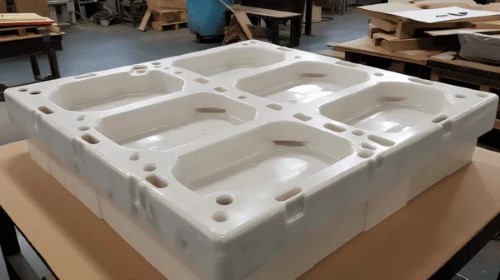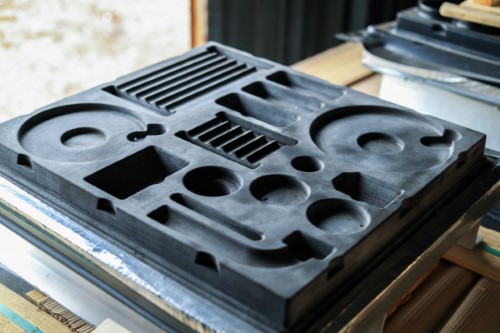LyndaQuinn LyndaQuinn
What Is Vacuum Forming Service: a Comprehensive Guide?

As you explore the world of manufacturing, you’re likely to come across the term “vacuum forming service.” But what exactly is it, and how can it benefit your business? In essence, vacuum forming involves heating a plastic sheet to create a moldable material that’s then shaped using a vacuum. This process allows for rapid prototyping and customized solutions for complex designs. But that’s just the tip of the iceberg. You’re about to discover the ins and outs of vacuum forming, from its benefits to the materials used, and the various techniques employed. So, let’s dive in and uncover the full potential of this versatile manufacturing process.
Understanding Vacuum Forming Process
As you delve into the world of vacuum forming, it’s essential to grasp the fundamental process that involves heating a plastic sheet until it becomes pliable, then molding it onto a specific shape or design.
This process requires precision and control to achieve the desired outcome.
In a vacuum forming service, a vacuum is used to remove air from the mold, allowing the heated plastic to conform to the desired shape.
The plastic is then cooled, and the resulting product is a precise replica of the original design.
Benefits of Vacuum Forming Service
By choosing a vacuum forming service, you can tap into a range of benefits that enhance the overall production process and final product quality.
You’ll enjoy cost-effective solutions, as vacuum forming companies can produce complex designs at a lower cost compared to other manufacturing methods.
Additionally, vacuum forming allows for rapid prototyping, enabling you to quickly test and refine your designs.
With vacuum formed packaging, you can also ensure the safe transportation of your products, reducing the risk of damage during shipping.
Furthermore, a reputable vacuum forming company can provide you with customized solutions tailored to your specific needs, ensuring that your products stand out in the market.
Materials Used in Vacuum Forming
Vacuum forming services typically work with a range of thermoplastic materials, including ABS, PVC, PETG, and HDPE, each offering unique properties that enable the creation of custom designs and products.
These materials are ideal for custom vacuum forming, as they can be molded into complex shapes and forms.
ABS, for instance, is a popular choice for its impact resistance and durability. PETG, on the other hand, is often used for its transparency and chemical resistance.
Through thermoforming vacuum forming, these materials can be transformed into a wide range of products, from medical devices to automotive parts.
Applications of Vacuum Forming
From medical devices and automotive parts to retail displays and consumer products, vacuum forming’s versatility enables it to tackle a wide range of applications.
You’ll find vacuum-formed components in medical devices, such as trays and packaging for surgical instruments.
In the automotive industry, you’ll see vacuum-formed parts like dashboards, trim components, and bumpers.
Retail displays, like shelves and display cases, also rely on vacuum forming.
Additionally, consumer products, such as appliances, furniture, and sporting goods, often incorporate vacuum-formed components.
Heavy gauge vacuum forming is particularly useful for creating thick, durable parts.
With vacuum forming thick plastic, you can produce strong, complex shapes that meet specific requirements.
The possibilities are endless, and vacuum forming’s flexibility makes it an attractive solution for various industries. Look at this site to get custom vacuum forming service.
Vacuum Forming Techniques Explained

Your vacuum forming project’s success relies heavily on selecting the right technique, as different methods yield varying results.
You’ll want to consider the type of material, desired shape, and level of precision needed.
There are several techniques to choose from, including precision vacuum forming, which offers high accuracy and detail.
This method is ideal for complex designs and small production runs.
Other techniques include drape forming, which uses a mold to shape the material, and free blow forming, which uses air pressure to shape the material.
Each technique has its strengths and weaknesses, and selecting the right one will greatly impact the quality of your final product.
Common Challenges and Limitations
While vacuum forming offers a high degree of design flexibility and precision, it’s not immune to challenges and limitations that can affect the quality of your final product.
As a manufacturer, you may encounter issues with material selection, tooling design, and process control, which can impact part accuracy and consistency.
Additionally, vacuum forming can be limited by the size and shape of the parts you’re trying to produce.
To overcome these challenges, it’s essential to work with an experienced vacuum forming service provider like Guangzhou Sme Plastic Co Ltd, which has the expertise and resources to optimize your design and manufacturing process.
Conclusion
You now have a solid grasp of vacuum forming service, a versatile manufacturing process that offers precision, customization, and cost-effectiveness.
By understanding the process, benefits, materials, applications, and techniques, you’re equipped to leverage this technology for your next project.
Whether it’s medical devices, automotive parts, or consumer products, vacuum forming can help bring your designs to life.